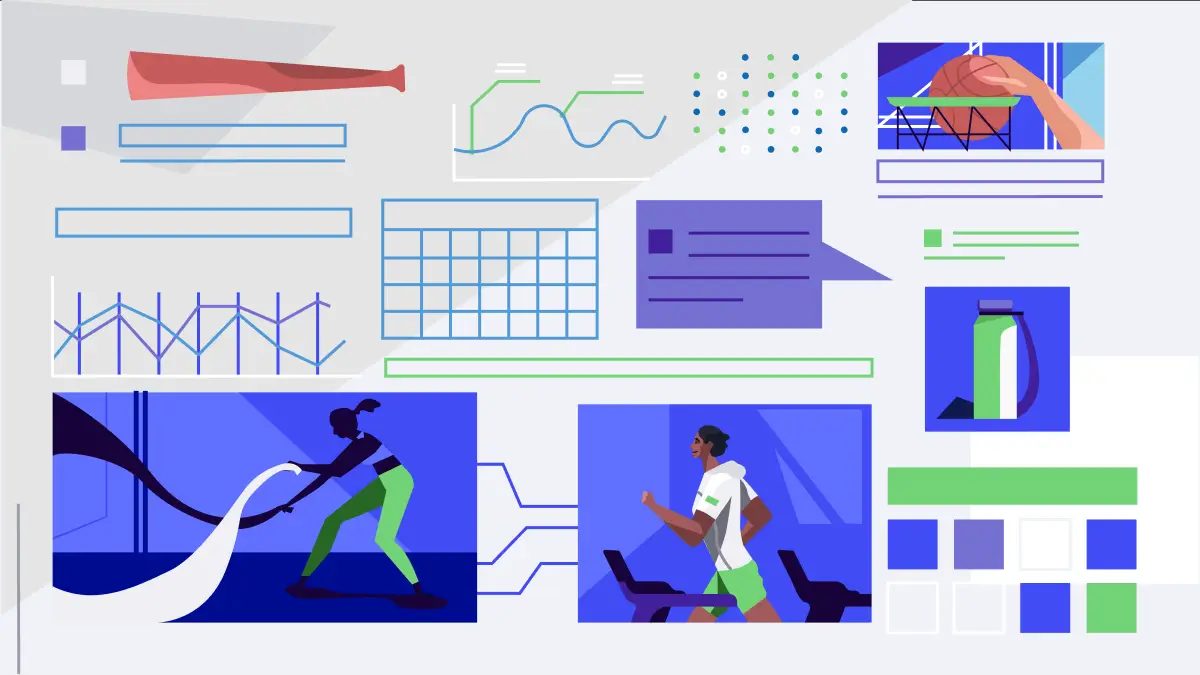The sports industry has been growing rapidly in recent years, and with it, the need for efficient and effective athlete training facilities. One of the key factors in the success of sports facilities is the use of data-driven approaches. In this blog, we will explore 10 data-driven approaches to sports athlete training business that can help to grow your business and increase your competitiveness.
Approach 1: Utilize Facility Management Software
Sports facility management software can help you to keep track of all the aspects of your sports facility, including inventory, memberships, and scheduling. By using software, you can collect and analyze data on the usage of the facility and identify areas that need improvement. For example, you can use software to track the number of athletes using the facility, the amount of time they spend there, and the type of training they are doing. This data can then be used to optimize the use of the facility and improve the athlete experience.
Approach 2: Monitor Equipment Performance
Equipment performance is critical to the success of a sports facility, and data-driven approaches can help you to monitor and improve it. For example, you can use sensors and data analytics to monitor the performance of equipment, such as the number of times it is used, the amount of time it is used, and the types of athletes using it. This data can then be used to make informed decisions about which equipment needs to be replaced, repaired or upgraded.
Approach 3: Measure Athlete Performance
Data-driven approaches can help you to measure the performance of athletes and identify areas for improvement. For example, you can use sensors and data analytics to measure the speed, agility, and strength of athletes, and compare it to previous performance. This data can then be used to create custom training plans for each athlete, based on their strengths and weaknesses.
Approach 4: Track Athlete Progress
Tracking athlete progress is critical to the success of a sports facility, and data-driven approaches can help you to do it efficiently. For example, you can use software to track the progress of athletes over time, including their performance, nutrition, and injury history. This data can then be used to create custom training plans for each athlete, based on their individual needs and goals.
Approach 5: Optimize Scheduling
Data-driven approaches can help you to optimize the scheduling of your sports facility, ensuring that it is being used efficiently and effectively. For example, you can use software to track the availability of the facility, the number of athletes using it, and the types of training they are doing. This data can then be used to optimize the scheduling of the facility, ensuring that it is being used to its full potential.
Approach 6: Improve Customer Satisfaction
Data-driven approaches can help you to improve customer satisfaction by understanding what athletes want and need from your facility. For example, you can use software to collect feedback from athletes about their experience at the facility, including the types of training they are doing, the equipment they are using, and the quality of the facilities. This data can then be used to make improvements to the facility and improve the athlete experience.
Approach 7: Enhance Marketing and Sales Efforts
Data-driven approaches can help you to enhance your marketing and sales efforts by understanding what athletes are looking for in a sports facility. For example, you can use software to track the number of athletes visiting your facility, the types of training they are doing, and the types of equipment they are using. This data can then be used to create targeted marketing campaigns that appeal to athletes based on their needs and interests.
Approach 8: Streamline Operations
Data-driven approaches can help you to streamline operations by reducing waste and maximizing efficiency. For example, you can use software to track the use of resources, such as water and electricity, and identify areas where usage can be reduced. This data can then be used to implement changes that will reduce waste and increase efficiency, saving money and improving the bottom line.
Approach 9: Monitor Safety and Compliance
Ensuring the safety of athletes is a top priority for sports facilities, and data-driven approaches can help you to monitor and improve safety and compliance. For example, you can use software to track the number of accidents and injuries, and identify trends and patterns. This data can then be used to make changes to the facility and improve safety, reducing the risk of accidents and injuries.
Approach 10: Foster Collaboration and Communication
Data-driven approaches can help to foster collaboration and communication between athletes, coaches, and other stakeholders. For example, you can use software to create a centralized platform where athletes can access their training plans, track their progress, and communicate with their coaches. This data-driven approach can help to improve communication and collaboration, leading to improved performance and a better overall athlete experience.
Putting it all together
To implement these 10 data-driven approaches, it is important to have the right tools and technology in place. Three data and analytics tools that can help with this are:
- Tableau: Tableau is a data visualization and analytics tool that can help to analyze and present data in a visually appealing way. This tool can be useful for monitoring equipment performance, measuring athlete performance, and streamlining operations.
- Power BI: Power BI is a data visualization tool that can help to analyze and present data in a visually appealing way. This tool can be useful for monitoring equipment performance, measuring athlete performance, and streamlining operations.
- IoT Sensors and Trackers: IoT sensors and trackers can be used to gather data on athlete performance, equipment usage, and facility usage. This data can then be analyzed and used to make informed decisions about training plans, equipment upgrades, and facility improvements. Some examples of IoT sensors and trackers include Fitbit, Nike+ and Strava.
By using these tools, you can ensure that you are collecting and analyzing the right data to make informed decisions and drive success in your sports athlete training business.
In conclusion, by embracing a data-driven approach to sports athlete training and utilizing tools such as Tableau, Power BI, and IoT Sensors and Trackers, you can improve the athlete experience, streamline operations, and grow your business. By using data sources such as sensors, data analytics, and feedback from athletes, you can gather valuable information to make improvements and stay ahead of the competition. Implementing these 10 data-driven approaches and utilizing the right technology can help to ensure the success of your sports athlete training business.
To see our sports scheduling software in action, schedule a call with a member of our team today!



